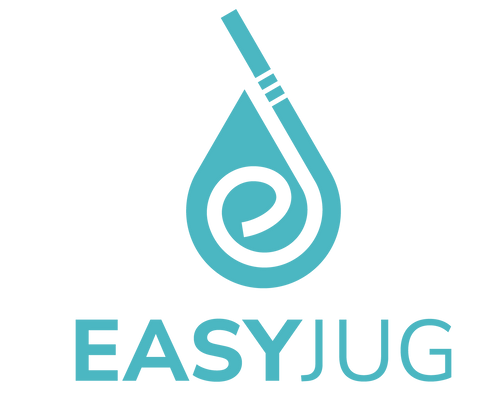Becoming a new parent is an extraordinary journey filled with moments of joy, excitement, and, of course, lots of questions. One of the most common questions from pregnant women and new mothers is, "When does lactation start?" Let's dive into the magical world of breastfeeding, liquid gold, and uncover the wonders of the different stages of breast milk.
Early Days: The Miracle of Colostrum
From the early weeks of the second trimester, your mammary glands are hard at work, preparing to nourish your baby. The first milk you produce is colostrum, a concentrated source of nutrients and white blood cells that help boost your baby's immune system. Colostrum production can begin as early as the first hours postpartum, and it's your baby's perfect good start in life.

Colostrum:
- It is the first form of milk produced immediately following delivery of the newborn.
- It is produced during pregnancy and the first few days postpartum, typically lasting for 2-5 days after birth.
- Colostrum is thicker and more yellowish in color compared to mature or transitional milk due to its high beta-carotene content.
- It is very high in proteins, especially antibodies like IgA, which protect the newborn against infections.
- Colostrum is lower in fat and sugar compared to later stages of milk, making it easily digestible for the newborn.
- It has a laxative effect on the baby, helping to pass the first stools (meconium) and reduce the risk of jaundice.
- It contains high levels of leukocytes (white blood cells) that offer further protection against bacteria and viruses.
- Colostrum is highly concentrated, meaning that babies only need a small amount during each feed to get the necessary nutrients.
- It is also rich in growth factors, which help the newborn's gut develop and prepare it to digest breast milk.
- Despite its small quantity, colostrum is sufficient to satisfy the nutritional needs of the newborn until transitional milk and eventually mature milk are fully established.

Hormonal Harmony: Prolactin and Milk Production
After the delivery of the placenta, a significant hormonal shift occurs. Your pituitary gland begins to secrete the hormone prolactin, which signals your body to produce milk. It's these hormonal changes that kickstart your breast milk production. Within 2-5 days after your baby's birth, you'll notice a large increase in the amount of milk—this is when your transitional milk starts to come in, leading to breast fullness and sometimes breast engorgement.
Transitional Milk:
- Transitional milk is the stage of breast milk that follows colostrum and precedes mature milk.
- It appears after the initial few days postpartum, typically between the third and fifth day after delivery.
- This milk is a combination of colostrum and mature milk and contains high levels of fat, lactose, and water-soluble vitamins. It's also richer in calories than colostrum.
- Transitional milk is part of the body’s natural progression to full lactation and helps to promote further growth and development in the newborn.
- The color and composition are in between the thick, yellow colostrum and the thinner, whiter mature milk.
The Transition to Mature Milk
By the end of the first week, your milk will gradually change from colostrum to what we call mature breast milk. This milk has all the fatty acids and nutrients required to meet your baby’s needs and to ensure a good supply as your baby grows. Skin contact and frequent nursing are some of the best ways to establish a good milk flow and prevent common breastfeeding problems like low milk supply or delayed onset of lactation.

Mature Milk:
- Mature milk is the final stage of breast milk that sets in usually around two weeks postpartum.
- It is composed of 90% water, which is necessary for keeping the infant hydrated, and 10% carbohydrates, proteins, and fats which are essential for both growth and energy.
- Mature milk comes in two types: foremilk and hindmilk. Foremilk is the milk at the beginning of a feeding, which is higher in lactose and lower in fat. Hindmilk is released later during a feeding and is richer in fat content.
- This milk provides all the nutrition a baby needs during the first six months of life and continues to be a vital part of the baby’s diet throughout the first year.
- Mature milk also contains antibodies and other immune factors that help protect the infant against infections and diseases.
Monitoring Milestones: Wet Diapers and Baby’s Stomach
One way to know if you're producing enough milk is to monitor your baby's output. Wet diapers and the first baby's poop are signs that what's going in is also coming out. These are reassuring signs that your baby’s stomach is getting filled with nourishing human breast milk.

Managing Expectations and Embracing Support
It's a good idea for new moms to consult a lactation consultant or join support groups to navigate through the different stages of their breastfeeding journey. Whether you're dealing with tender breasts in the early days, a health condition that affects milk production, or the challenges of latching, remember that every new parent's experience is unique.
The Well of Wellness: Hydration's Role in Milk Production
The production of milk is a dynamic process that requires an abundance of water. After all, human milk is composed of about 87% water. During the first weeks postpartum, as you navigate being a first-time parent, it's essential to keep yourself well-hydrated to ensure you and your baby are properly nourished.
Water is the primary fluid your body uses to make milk, and without adequate hydration, there can be a short time lag in milk production. Milk ducts are like a network of rivers supplying a nourishing lake; without enough water, the rivers run dry, potentially leading to delayed milk production. Your body will compensate and draw fluid from within your body which can then lead to constipation, headaches, brain fog, muscle aches, and fatigue.
Hydration and Health: Partnering with Care Providers
Discuss your hydration needs with your healthcare provider or a lactation specialist. They can provide personalized advice, taking into account any medical conditions or pain medications you may be on, which can affect your body's fluid needs. Lactation counselors often suggest that mothers drink to thirst, which means drinking whenever you feel thirsty, especially in the first days of life of your newborn, when expressing milk becomes a frequent part of your routine.

Effortless Hydration: The EasyJug Advantage for Breastfeeding Moms
When it comes to breastfeeding, International Board Certified Lactation Consultants (IBCLCs) recognize that the little things can make a big difference. That's why they often recommend innovative tools like EasyJug, the first hands-free water bottle designed specifically for breastfeeding moms.
Producing much milk for your baby involves a delicate balance of health and convenience. The EasyJug allows new moms to hydrate without interrupting the precious moments of bonding.
EasyJug and the Lactation Process
Lactation counselors understand that the process of lactation is not just about the biological aspects—it's also about the practicality of the mother's lifestyle. EasyJug supports this process by making hydration effortless. Whether you’re in the early weeks of pregnancy, preparing for the journey ahead, or you’re already in the midst of nursing, having access to water at all times without using your hands can be a game-changer.

Beyond Water: The Importance of Overall Nutrition
While water is essential, overall nutrition cannot be overlooked. The types of breast milk, from colostrum to mature milk, are influenced by your diet. New moms in their third trimester and those who have just given birth should focus on a balanced diet rich in nutrients.
In Conclusion:
The most important thing to remember is that your body is designed to produce milk to your baby’s demand. Breastfeeding is a natural process, and your breasts are like milk-making factories ready to provide the rich milk necessary for your child's development. So trust in your body's ability, seek guidance from healthcare providers when needed, and cherish the early days of this beautiful journey.
Community & Support
We know the beautiful chaos of motherhood – the endless feedings, diaper changes, and sleepless nights. Amidst all this love and care, it's easy to forget about your own well-being. That's where EasyJug steps in – to make hydration a breeze for you.
Join our community of nurturing mothers and prioritize your health with EasyJug. Sign up now to receive exclusive tips on staying hydrated during your breastfeeding journey, along with special offers just for you.
Because when you take care of yourself, you can give your little one the best version of you. Let's hydrate together and thrive as moms!
Sign up today and get 10% off your first purchase!



